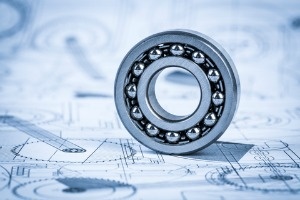 Bearings are an essential part of our everyday lives, yet we only notice them when they fail. Then we become acutely aware of how maddening they can be.
Bearings are an essential part of our everyday lives, yet we only notice them when they fail. Then we become acutely aware of how maddening they can be.
Bearing failures can come out of nowhere and ruin your day. Replacing a wheel bearing in your car can keep you from getting to work and cost you a hefty repair fee. If a bearing breaks down in your computer’s hard drive, you may lose work files or treasured family photos and videos.
Large-scale bearing failures can have even greater consequences. For instance, this past July the Washington Monument was closed to tourists for nearly a week due to a failure in one of the elevator’s two pulley bearings. As the tallest structure in Washington DC, the Washington Monument offers the best view of our nation’s capital, and tickets to ride this elevator to the top are generally procured months in advance. Imagine the frustration of missing out on an experience because of something as mundane as a bearing.
Bearing manufacturers are aware of the consequences that bearing failures have, and while no bearing will run indefinitely, suppliers are researching improvements to limit unexpected bearing failures and to extend the overall life of bearings. It’s much easier to plan around scheduled maintenance than it is to deal with hundreds of angry tourists.
Improvements in bearing technology are becoming increasingly important as limiting unexpected maintenance costs is critical. Some companies seek to achieve this by using new bearing designs, such as Coo Space, which is testing a ball bearing with slight divots in the outer ring. This design significantly reduces friction, which lowers the likelihood of bearing failure and extending its useful life.
Other companies have introduced bearing monitoring technology that helps operators identify potential problems before they result in complete failure. SKF, for instance, launched its Insight intelligent bearing technology in 2013 that enables operators to monitor the status of bearings via internal sensors. SKF began testing Insight technology in rail and wind turbine applications in 2015. Another approach is to use ultrasonic monitoring. Most bearings are not easily accessible for inspection, but ultrasonic monitoring can be used to detect increases in the sound a bearing creates while in operation to determine if the bearing is operating efficiently.
Or you can just get rid of the bearing altogether. For instance, solid state hard drives don’t have moving parts and are less likely to fail. Whatever option you choose, it’s unlikely unexpected bearing failure will ever be completely eliminated. However, improvements in bearing design and monitoring can make maintaining these components a little easier to bear.
Additional Resources
Interested to learn more? The Freedonia Group's industry study World Bearings provides in-depth data and analysis on bearing materials & technology, world supply & demand, industry structure, and leading bearing manufacturers. This comprehensive study is designed to help business leaders stay ahead of the competition and make informed, analytically driven decisions.
About the Author: Kyle Peters is an Industry Analyst at The Freedonia Group, a leading international business research company, founded in 1985, that publishes more than 100 industry studies annually.


